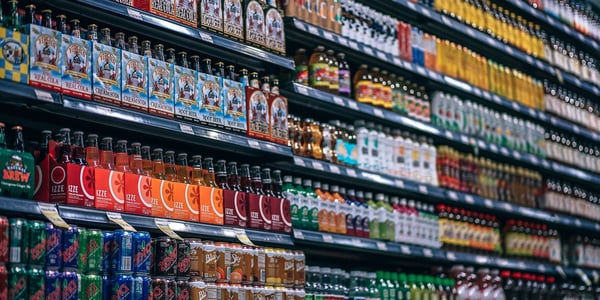The food and beverage industry has been a little slower than other areas of manufacturing when it comes to embracing the power of the Internet of Things (IoT). This caution might stem from harsh production environments, stubborn stakeholders or strict regulatory requirements.
Whatever the cause, the delay is preventing food and beverage manufacturers from reaping the benefits IoT brings. If you’re sceptical of the impact these connected devices will have on your business, then this blog should convince you otherwise.

4 Benefits of implementing Internet of Things (IOT) to the Food Industry
- Improved Operational Efficiency
- Comply With Food Safety Regulations
- A More Efficient Logistics and Distribution Process
- Addressing the Concerns of Well-Informed Customers
![[FREE GUIDE] IT and OT Systems Convergence Guide Your Roadmap to Success](https://no-cache.hubspot.com/cta/default/4487147/b3639758-ae31-488e-b976-430b54051ee2.png)
1. Improved Operational Efficiency
Every decision that’s made is done with the hope of improving operational efficiency. The whole industry is looking for the most effective ways of reducing downtime, increasing production, reduce waste and cutting costs.
By implementing IoT solutions, food manufacturers can hit these targets in a few separate ways. One of the most obvious is through improved stock management. Tracking consumer demand and ensuring you have the right number of raw materials available is no easy feat.
Order too much and money is wasted, don’t order enough and you might miss lucrative opportunities and hand the advantage to your industry rivals. It’s a difficult tightrope to walk but it’s a whole lot easier once IoT is implemented.
Sensors and integrated data points automatically provide all the information needed to order more raw materials or cut production entirely. The more data you have, the more informed you are to make the right business decisions.
2. Comply with Food Safety Regulations
It’s no surprise that one of the most important considerations for the whole industry is food safety regulations. No matter where you’re based, you’ll have to comply with governmental agencies and legislation that ensures every product passing through your plant is up to standard.
As regulations become stricter, it can be difficult for manufacturers to carry out the monitoring needed to show they’re compliant. With IoT, that’s no longer an issue. Sensors and IoT-enabled record-keeping make staying compliant easier without compromising on the quality of the products.
In practice, this looks like IoT enabled sensors being used to monitor temperatures in food storage. Another use would be during the transportation stage where devices can be utilised to track the condition of food and drink.
If sensors detect any change in conditions that could cause problems, members of staff can be automatically notified to carry out food safety inspections. This reduces food wastage and ensures the manufacturer can stay compliant and flexible enough to meet shifting demand.
3. A More Efficient Logistics and Distribution Process
IoT devices aren’t just effective on the plant floor, they can be put to beneficial use throughout the entire distribution network. Many manufacturers are already using transmitters and GPS systems to keep an eye on shipments as they move across the globe.
This insight gives manufacturers access to real-time data that can be used to monitor the entire supply chain.
Not only does this help with coordination at its simplest level, i.e. where in the world is a particular batch, but they can also act as part of a wider network of IOT devices that monitor customer preferences.
For example, you might send shipments that aren’t cost-effective due to the difficulty it takes to get items to a destination. When integrated with other third-party data collection systems, you might realise the demand just isn’t worth it and it’s better to focus attention elsewhere.
4. Addressing the Concerns of Well-Informed Customers
Today’s consumers have more information than ever before. They can pick a box of cereal off a supermarket shelf and, after a quick Google search, find everything they need to know. Nutritional information, country of origin and other customer reviews are just some of the details they can find at the touch of a button.
If a customer isn’t happy with the information, they find or there’s no data available at all, then they’re not going to buy that box of cereal. You need to be as transparent as possible with customers, outlining everything they want to know. This establishes trust and convinces them to choose your cereal over your competitor’s.
IoT solutions can make this process smooth and straightforward. Imagine the box of cereal features a QR code that can be scanned. This gives the consumer all the information they need - when the cereal was manufactured, where it’s come from, the route it took and when it arrived. Satisfied with the answers they’ve found; the shopper adds the cereal to their trolley, and you’ve benefited from a sale.
IoT, Industry 4.0 and Convergence
Embracing IoT is just a part of wider digitisation that’s happening in the food and beverage industry. Manufacturers are all seeking the same thing - reduced costs and improved production efficiency - and digitisation is the answer.
For more information on digitisation and the benefits of restructuring your business to improve agility, security, and productivity, download our guide below.


